生活內底揣趣味(生活中找樂趣)
says
最新發現! 印度出土古老石器 撼動「非洲起源」假說
 最新發現! 印度出土古老石器 撼動「非洲起源」假說 - 國際 - 自由時報電子報
最新發現! 印度出土古老石器 撼動「非洲起源」假說 - 國際 - 自由時報電子報
然後記者寫錯,是Nature不是"Natural"
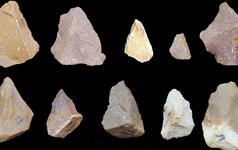 Ancient Stone Tools Found in Tamil Nadu Push Back &#...
Ancient Stone Tools Found in Tamil Nadu Push Back &#...
論文:
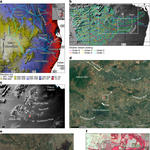 Early Middle Palaeolithic culture in India around 38...
Early Middle Palaeolithic culture in India around 38...
#考古 #人類起源 #文明 #多元起源點 #印度 #非洲起源說 #石器時代 #摩洛哥 #以色列 #狐猴大陸
 最新發現! 印度出土古老石器 撼動「非洲起源」假說 - 國際 - 自由時報電子報
最新發現! 印度出土古老石器 撼動「非洲起源」假說 - 國際 - 自由時報電子報然後記者寫錯,是Nature不是"Natural"
 Ancient Stone Tools Found in Tamil Nadu Push Back &#...
Ancient Stone Tools Found in Tamil Nadu Push Back &#...論文:
 Early Middle Palaeolithic culture in India around 38...
Early Middle Palaeolithic culture in India around 38...#考古 #人類起源 #文明 #多元起源點 #印度 #非洲起源說 #石器時代 #摩洛哥 #以色列 #狐猴大陸
生活內底揣趣味(生活中找樂趣)
says
via 噗內回應
生活內底揣趣味(生活中找樂趣)
says
A recent discovery in Israel pointed to the possibility that modern humans migrated out of Africa 180,000 years ago. But stone tools unearthed in Attirampakkam have been found to be 385,000 years old.
生活內底揣趣味(生活中找樂趣)
says

生活內底揣趣味(生活中找樂趣)
says
It has been thought that the Indian Middle Palaeolithic culture developed 90,000-140,000 years ago and was closely tied to the dispersal of modern humans from Africa. But tools excavated from Attirampakkam, Tamil Nadu, have now pushed the antiquity of this culture by almost 50,000 years.
生活內底揣趣味(生活中找樂趣)
says
The tools bear marks of the Levallois technology that has its roots in Africa and predates the arrival of modern humans in India.
生活內底揣趣味(生活中找樂趣)
says
“These findings spark a new debate about the origins of the Indian Middle Palaeolithic culture,” according to Shanti Pappu, the founder/secretary of the Sharma Centre for Heritage Education (SCHE), as told to The Wire.
生活內底揣趣味(生活中找樂趣)
says
The timeline of human history has been, and is, constructed by piecing together evidence from genetic, anthropological and archaeological studies. Among the various types of artefacts, stone tools provide the more concrete evidence of the whereabouts of our ancestors as they journeyed through space and in time.
生活內底揣趣味(生活中找樂趣)
says
At the beginning of the Stone Age, early hominins used simple stone tools to gather food from trees and for hunting. As our species evolved and developed abstract thinking, our tool-making technology became more sophisticated. Gradually, modern humans in Africa found new ways of shaping rocks into useful instruments.
生活內底揣趣味(生活中找樂趣)
says
“There is a clear difference between the techniques used by hominins to fashion their tools and the knapping technology that evolved over time,” Pappu, also the corresponding author of the new study, explained.
生活內底揣趣味(生活中找樂趣)
says
Complex design
生活內底揣趣味(生活中找樂趣)
says
Most early Stone Age tools were made by splintering rocks with either a hard stone or antler/wood hammers. The detached flakes would then be shaped into tools of different kinds, like scrapers or hand-axes.
生活內底揣趣味(生活中找樂趣)
says
In the Middle Palaeolithic period, a new technology called Levallois became common for forging instruments. “The technique involves the removal of small flakes or points from carefully prepared cores in a structured manner,” Pappu said.
生活內底揣趣味(生活中找樂趣)
says
The geometric complexity of the process is thought to be a testimony to abstract thinking; some scientists even associate it with the Homo sapiens.
生活內底揣趣味(生活中找樂趣)
says
By examining stone tools from Attirampakkam, a village located about 65 km west-northwest of Chennai, Pappu and colleagues have shown how the Indian Middle Palaeolithic emerged from the preceding Acheulean culture around 385,000 years ago and then tracked its subsequent evolution until around 172,000 years ago.
生活內底揣趣味(生活中找樂趣)
says
“What’s special about the new tools found at Attirampakkam is that they are complex in design and bear the markings of technologies used by Middle Palaeolithic cultures,” Pappu said. “This implies that groups of humans consistent with this culture started dispersing from Africa (possibly) much earlier than what we believe.”
生活內底揣趣味(生活中找樂趣)
says
But apart from being one of the oldest known sites for lithic records, artefacts recovered from Attirampakkam are also significant because of the site’s location.
生活內底揣趣味(生活中找樂趣)
says
The Indian subcontinent (not just India) lies between East Africa, Dmanisi in Georgia and Sangiran in Southeast Asia. These regions contain paleoanthropological records – in the form of fossils or stone artefacts – dating back to 1.8 million years or earlier.
生活內底揣趣味(生活中找樂趣)
says
Ergo, Attirampakkam must have been at a biological or technological crossroads as humans evolved and dispersed.
生活內底揣趣味(生活中找樂趣)
says
生活內底揣趣味(生活中找樂趣)
says
“That way, the palaeoanthropological record of this region is critical for linking the earliest evidence found in the regions of the Old World (East Africa, Georgia and Southeast Asia) while understanding hominin evolution and adaptations,”
生活內底揣趣味(生活中找樂趣)
says
Parth Chauhan, an assistant professor of humanities at the Indian Institute for Science Education and Research, Mohali, told The Wire. Chauhan was not involved in the study.
生活內底揣趣味(生活中找樂趣)
says
Luminescence dating
生活內底揣趣味(生活中找樂趣)
says
Excavation at Attirampakkam began in 1999. In the beginning, researchers from SCHE studied the artefacts recovered from the lowest rung of the excavation site, which corresponds to the Lower Palaeolithic or the Acheulean period. More recently, they analysed artefacts dug out from the layers on top.
生活內底揣趣味(生活中找樂趣)
says
So by studying the site layer by layer, scientists have been able to reconstruct the history of human habitation, behaviour and culture in India.
生活內底揣趣味(生活中找樂趣)
says
“In the present study, one of our prime objectives was to examine the entire period of Middle Palaeolithic at Attirampakkam with a global perspective – specifically, its origins and evolution,” Pappu said.
生活內底揣趣味(生活中找樂趣)
says
生活內底揣趣味(生活中找樂趣)
says
To this end, he and his team excavated more than 7,000 stone tools from the sediment layer and analysed them in the lab. They kept an eye out for the presence of telltale marks of tool-making technologies and, based on that, tried to attribute specific uses to these tools.
生活內底揣趣味(生活中找樂趣)
says
They also examined cores and waste materials that arise from tool-making processes to discern their underlying techniques.
生活內底揣趣味(生活中找樂趣)
says
The age of the artefacts was calculated using luminescence dating, which relies on radiation-induced luminescence in natural minerals.
生活內底揣趣味(生活中找樂趣)
says
Exposure to radiation from natural radioactivity introduces minor electronic changes in the structure of minerals like quartz and feldspar. These changes can be uncovered by luminescence. Normally, such changes are reversed when minerals are exposed to sunlight.
生活內底揣趣味(生活中找樂趣)
says
“So, before burial, the sediments have zero/near zero residual luminescence,” Ashok Kumar Singhvi, a coauthor of the study, explained. “But once the minerals are buried, they start accumulating luminescence due to radiation exposure from its environment.”
生活內底揣趣味(生活中找樂趣)
says
Because naturally occurring radioactive minerals decay at a very slow rate, the radiation exposure rate remains constant on a million-year time scale. Luminescence analysis of a mineral provides a measure of the “total radiation exposure” it would’ve received since burial – i.e the time when sediments were last exposed to the Sun.
生活內底揣趣味(生活中找樂趣)
says
Analysing the concentration of natural radionuclides provides the annual rate of radiation exposure. The ratio of the total exposure to annual exposure provides the age.
生活內底揣趣味(生活中找樂趣)
says
Singhvi and his colleagues Haresh and Anil from the Physical Research Laboratory, Ahmedabad, conducted a luminescence analysis on sediments surrounding the artefacts. They assumed that the sediments corresponded to the periods when the tools were created.
生活內底揣趣味(生活中找樂趣)
says
Thus they found that the tools are at least about 172,000 years old – which means they were made 50,000 years before the first Homo sapiens are thought to have reached India, bringing with them their trademark technology.
生活內底揣趣味(生活中找樂趣)
says
“These results usher in a paradigm change in terms of how we perceive human evolution and what we know about human dispersal from Africa,” Pappu said.
生活內底揣趣味(生活中找樂趣)
says
But the study remains silent on who made these tools.
生活內底揣趣味(生活中找樂趣)
says
“Were these technologies brought to Attirampakkam by modern humans or were they developed by other early human species – that can’t be gauged from the data,” Chauhan said. This last piece of the puzzle has multiple implications
生活內底揣趣味(生活中找樂趣)
says
A string of evidence from diverse locations has warped the timeline of human dispersal from Africa. Fossils found last year in Jebel Irhoud, Morocco, and a jawbone recovered from a site in Israel suggest that hominins dispersed early, about 180,000 years ago.
生活內底揣趣味(生活中找樂趣)
says
生活內底揣趣味(生活中找樂趣)
says
In fact, according to a rough estimate, modern humans may have ventured out of Africa about 85,000 years earlier than previously thought.
生活內底揣趣味(生活中找樂趣)
says
But while conclusions based on data collected from the Moroccan and Israeli sites is held up by fossils, Pappu and her team are yet to recover fossils or DNA that could help them piece together the entire puzzle. Thus, they have been extremely cautious in their study and don’t make any claims about who could have made these tools.
生活內底揣趣味(生活中找樂趣)
says
Fossil evidence
生活內底揣趣味(生活中找樂趣)
says
“Finding fossils is a matter of luck,” Pappu said. Apart from a single hominin cranium, no fossils from this time-period have been found in India. Given that tools are an important part of human culture and behaviour, she added, “It would be silly to neglect them and focus only on fossils for delineating the history of human evolution.”
生活內底揣趣味(生活中找樂趣)
says
But despite the absence of fossils, the scientists are confident that their Tamil Nadu study suggests a succession of population dispersals across South Asia, possibly marked by an interaction between modern humans and other archaic species.
生活內底揣趣味(生活中找樂趣)
says
“This is a nice example of using stone tool records to document changes in cultural behaviour,” Mark Stoneking, a geneticist at the Max Planck Institute for Evolutionary Anthropology, Leipzig, told The Wire. “But in the absence of any fossils from the Middle Palaeolithic in India, the conclusions become speculative.”
生活內底揣趣味(生活中找樂趣)
says
Even if the Middle Palaeolithic stone tool technology developed much earlier in India and is contemporaneous with similar developments in Africa and Europe, it does not prove that hominins in the Old World interacted with each other at this time.“The tools could have been made by modern humans.
生活內底揣趣味(生活中找樂趣)
says
They could have also been made by archaic humans,” Stoneking speculated, “so we don’t know if this was an indigenous development in India”; he admits that this “seems unlikely”.
生活內底揣趣味(生活中找樂趣)
says
Chauhan, however, holds a slightly different view: “Chances are stronger that the reported Indian technology belongs to archaic hominins,” he told The Wire.
生活內底揣趣味(生活中找樂趣)
says
This possibility is supported by the fact that many early humans, including Neanderthals, developed similar technologies without interacting with the Homo sapiens, he said. “If they can, then archaic humans colonising India could have also developed similar technologies on their own.”
生活內底揣趣味(生活中找樂趣)
says
But if we assume that the Early Middle Palaeolithic at Attirampakkam represents Homo sapiens, then there are greater implications.
生活內底揣趣味(生活中找樂趣)
says
The artefacts recovered from South India are older than the oldest known Homo sapiens fossils found in Africa (300,000 years ago). Even the oldest fossils outside Africa – recently reported from Israel – are far younger than those found at Attirampakkam.
生活內底揣趣味(生活中找樂趣)
says
According to Chauhan, “If the area at Attirampakkam was indeed inhabited by modern humans, it means that the oldest known Homo sapiens fossils have yet to be recovered, wherever their origins may be.”
生活內底揣趣味(生活中找樂趣)
says
The study was published in the journal Nature on January 31, 2018.
生活內底揣趣味(生活中找樂趣)
says
=引用結束=
生活內底揣趣味(生活中找樂趣)
says
生活內底揣趣味(生活中找樂趣)
says
古人類學家普遍認為,現代人類具有「單一起源」特性,認為人類的共同祖先來自非洲,然而最新考古研究在印度發現更為古老的人類石器,可能撼動已被廣泛接受幾十年的「人類起源於非洲」論點。
生活內底揣趣味(生活中找樂趣)
says
根據上月31日發表的國際期刊《自然》(Natural)中一篇論文,印度南部坦米爾納杜邦(Tamil Nadu)的考古學家帕普(Shanti Pappu)與其研究團隊,在阿堤蘭帕坎(Attirampakkam)遺址挖掘出數以千計的石製工具,經最新測年技術鑑定,年代可追溯到38萬5000年前。
生活內底揣趣味(生活中找樂趣)
says
過去出土的證據普遍顯示,現代人類約在距今25萬年前起源於非洲,而在非洲發現的人類石器工具的年份同樣也在20多萬年前,增強了古人類學家對於人類單一起源假說的信心,然而,這次發現的石器更為古老,顯示人類起源可能並非單一區域,而是更為多元複雜。
生活內底揣趣味(生活中找樂趣)
says
據此結果,研究團隊認為,印度的人類可能在38萬5000年前至17萬2000年前,當時還是舊石器時代中期就已發展,較過去發現僅能追溯至12萬5000年前的證據,往更久遠的年代推進。
生活內底揣趣味(生活中找樂趣)
says
不過主持該計畫的帕普也表示,這次在該遺址的考古行動並未發現人類遺骸,無法斷定製造這些器具的人種,未來團隊將持續進行研究,並在釐清與印度物種文化的連結時更加謹慎。
生活內底揣趣味(生活中找樂趣)
says
=引用結束=
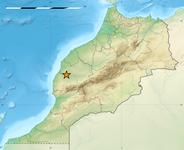 The Humans of Jebel Irhoud – a Poem - The Wire
The Humans of Jebel Irhoud – a Poem - The Wire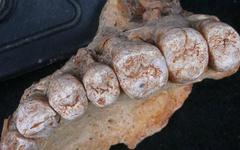 Fossil Jawbone Found in Israel Is the Oldest Modern ...
Fossil Jawbone Found in Israel Is the Oldest Modern ... The earliest modern humans outside Africa
The earliest modern humans outside Africa 8500年前の井戸発見、中に男女の骨 イスラエル
8500年前の井戸発見、中に男女の骨 イスラエル Lemur - Wikipedia
Lemur - Wikipedia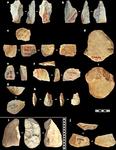 @CteaX55 - 黃土高原 210萬年前已現人跡《自然》期刊十一日公布最新研究指出,國際科研團隊歷經...
@CteaX55 - 黃土高原 210萬年前已現人跡《自然》期刊十一日公布最新研究指出,國際科研團隊歷經... @CteaX55 - 與世隔絕5.5萬年 僅存400人的部落恐遭滅族加洛瓦(Jarawa)部落在印度洋的...
@CteaX55 - 與世隔絕5.5萬年 僅存400人的部落恐遭滅族加洛瓦(Jarawa)部落在印度洋的...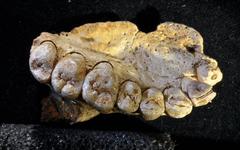 @CteaX55 - 非洲之外最老的人類化石在以色列出土 - 衛報科學版(2018-1-25)人類歷史比...
@CteaX55 - 非洲之外最老的人類化石在以色列出土 - 衛報科學版(2018-1-25)人類歷史比... @CteaX55 - 透過顏面重建模型,4萬年前的古代人起死回生正當Brexit英國脫歐協商距離終點僅剩...
@CteaX55 - 透過顏面重建模型,4萬年前的古代人起死回生正當Brexit英國脫歐協商距離終點僅剩... @CteaX55 - 呂宋人:菲律賓洞窟內新發現 上溯6萬7千年前的古代人種 - 衛報科學版(當日點閱率...
@CteaX55 - 呂宋人:菲律賓洞窟內新發現 上溯6萬7千年前的古代人種 - 衛報科學版(當日點閱率... @CteaX55 - 地球史前文明仍有許多謎團,如今考古學又有重大發現。7月3日,美國研究團隊在墨西哥猶...
@CteaX55 - 地球史前文明仍有許多謎團,如今考古學又有重大發現。7月3日,美國研究團隊在墨西哥猶... @CteaX55 - 《自然期刊》新研究:太平洋沿岸東亞人祖先可能源自台灣 法國國家科學研究中心(CNR...
@CteaX55 - 《自然期刊》新研究:太平洋沿岸東亞人祖先可能源自台灣 法國國家科學研究中心(CNR...